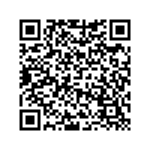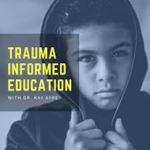1 Trauma-informed leadership with Jim Sporleder
Being a principal can be a challenging and demanding role. Balancing the needs of students with those of the staff and the school community can be challenging. With so many competing demands, adopting a trauma-informed approach can seem enormous, mainly when teachers and the school community are tired and wary of new approaches. So why would leaders want to adopt trauma-informed practices in their schools? Keep reading to learn more.
Jim Sporleder
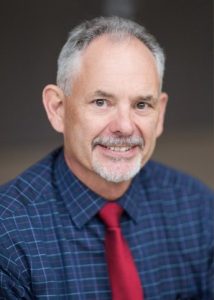
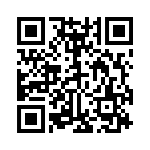 Jim Sporleder is the author of Trauma-informed Practice: An Implementation Guide for Administrators and School Personnel. After 33 years as an educator, and most recently as principal of Lincoln High School in Walla Walla, Washington, USA, Jim and his staff’s pioneering work was documented in the movie ‘Paper Tigers’. Most recently, Jim and Heather Forbes published the trauma-informed practice implementation guide for school administrators, designed to provide a step-by-step guide on transforming any building into a trauma-informed school.
Jim Sporleder is the author of Trauma-informed Practice: An Implementation Guide for Administrators and School Personnel. After 33 years as an educator, and most recently as principal of Lincoln High School in Walla Walla, Washington, USA, Jim and his staff’s pioneering work was documented in the movie ‘Paper Tigers’. Most recently, Jim and Heather Forbes published the trauma-informed practice implementation guide for school administrators, designed to provide a step-by-step guide on transforming any building into a trauma-informed school.
Learn more about Mr. Sporleder’s work by clicking or scanning the QR code.

Mr. Sporleder: School was tough for me as a student. Some of my elementary teachers told my parents I would never make it to college and that they’d have to find another route for me. So, my way into education was a little interesting. I wanted to be the teacher who told the students what I wished my teachers had told me growing up. I was a challenge for my teachers. Back in the day, in the very traditional mindset of teaching, I wasn’t the easiest student to have in class. But, some of the things shared with me as a student were quite discouraging and demoralising. I believe that I had issues with Attention Deficit Hyperactivity Disorder (ADHD ). I could not sit still. My mind would continuously be on the go, and I couldn’t concentrate. I would become extremely frustrated, and then my frustration would manifest in my behaviour. I had anger issues. My frustration would get to a point, and then, all of a sudden, this rage would come out, and I didn’t understand it. I’m a minister’s son, and I always say that they should have an 11th Adverse Childhood Experience and that it should be if you’re a minister’s son. So then there was always this shaming of my behaviour, which was quite difficult and taught me very little.
 The Australian Child Maltreatment Survey
The Australian Child Maltreatment Survey
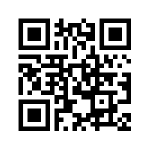 The Australian Child Maltreatment Study (ACMS) is a landmark Australian study of the prevalence of child maltreatment. We have generated essential data on how many Australians have experienced each of the five types of child maltreatment (physical abuse, sexual abuse, emotional abuse, neglect, and exposure to domestic violence). The study is also important globally as it is one of the most comprehensive studies on child maltreatment. The ACMS surveyed just over 8500 Australians aged 16 years and over to determine how many Australian people have experienced child abuse and neglect.
The Australian Child Maltreatment Study (ACMS) is a landmark Australian study of the prevalence of child maltreatment. We have generated essential data on how many Australians have experienced each of the five types of child maltreatment (physical abuse, sexual abuse, emotional abuse, neglect, and exposure to domestic violence). The study is also important globally as it is one of the most comprehensive studies on child maltreatment. The ACMS surveyed just over 8500 Australians aged 16 years and over to determine how many Australian people have experienced child abuse and neglect.
Click or scan the QR code to learn more about the study’s findings.
Dr. Ayre: Jim, did you experience that difficulty right through your schooling?
Mr. Sporleder: My behaviour was challenging throughout elementary school, yet the learning frustrations always stayed with me. When I got into junior high school, though, I was fortunate enough that I started to develop athletically. In junior high, I ran into an old-school coach who was very military-oriented and ran things as such. Boy, he really let me have it after a couple of screw-ups in his class. I didn’t want to do anything to put my sports at risk, so I just flipped my behaviour. After that, I was never actually removed from class. I was a model of behaviour, but I carried the learning frustrations throughout my schooling.
 Attention Deficit Hyperactivity Disorder
Attention Deficit Hyperactivity Disorder
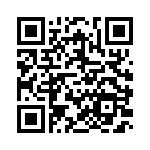 The Australian ADHD Professionals Association’s guide is to encourage people to think about and stop using words/rhetoric (including words that elicit negative narratives and stereotypes) that tend to feed into the stigma surrounding ADHD and cause psychological harm to those living with the disorder, and instead, use language that fosters understanding and awareness of ADHD and aligns with the recovery paradigm, i.e. hope for the future, acceptance of disability, personal empowerment.
The Australian ADHD Professionals Association’s guide is to encourage people to think about and stop using words/rhetoric (including words that elicit negative narratives and stereotypes) that tend to feed into the stigma surrounding ADHD and cause psychological harm to those living with the disorder, and instead, use language that fosters understanding and awareness of ADHD and aligns with the recovery paradigm, i.e. hope for the future, acceptance of disability, personal empowerment.
Click or scan the QR code to access the free resource.
Lincoln High School
Dr. Krishnamoorthy: As Principal at Lincoln High School, what problems were you trying to address when you embraced the trauma-informed approach?
Mr. Sporleder: Firstly, we’ll take a step back. Here in town, we have two middle schools. I had started my teaching career at one of the middle schools, Garrison Middle School. I said I would never go into administration. I was the special education teacher and loved it. I was at Garrison for 22 years and called it my dream job. I had no intentions of leaving or going into administration. I felt very blessed that I could retire in the same school after 30 years.

Our school district hired a consultant who went out and assessed all of our district’s alternative programs. I don’t know why, but he came to see me and wanted to leave the report with me. He was lovely, but I thought, “Why in the heck are you here?” I took his report home, and I finally read it one day, and it was extremely painful. He gave a tremendous voice to the students, staff, community, law enforcement, and community partners. He did an incredible job, and the voice of his report was devastating to me. Students said nobody cared about them, that they were the bad kids. The teachers were saying the same thing, “We’re the bad teachers. Nobody cares about us.” None of them felt safe. It was a very unsafe environment. I couldn’t get that sense of pain out of my mind.
I went in after that and asked to be transferred. The school wasn’t called Lincoln then, though. It was called Payne Alternative High School. I always say, “Send your most struggling students to Payne, and we’ll make it worse.” So it was when I got over to Payne that we decided if we were going to change the culture, we needed a new name. The students chose Lincoln as the name of the high school and the Phoenix as the mascot. An interesting point is after the students chose that name, I had an elderly community member come in about two weeks after it came out in the paper, and she had a paper bag with her. She entered my office and said, “I have a gift for you.” And she handed me this paper bag with a china plate and a hand painting of Lincoln High School. She told me Lincoln High School had been on our footprint in the early 1800s. So the students picked Lincoln, and it’s like coming out of the ashes.
“Students said nobody cared about them, that they were the bad kids.”
So we changed the name and started to try and work on changing the culture. It was very challenging. It was the most out-of-control school environment I had ever seen. A simple request from an authority was met with such defiance that it was pretty overwhelming, to be honest with you. And I, not knowing anything about being trauma-informed, really took a very traditional approach to get control. About five gangs were involved at the school, and you could feel the tension. You knew the spark was going to go off. You didn’t know when, but you had a forest fire when it did. I had to work with the community police on their reaction time, which turned into a partnership. We took up so much time that they partnered with us on a School Resource Officer. It felt like we walked through hell before getting to where we wanted to be.“My priority was ensuring the students and staff felt safe.”
As we improved, we intended to build a school culture where these students and the staff felt valued. My number one priority was that the students and staff felt safe. As educators, we’re trained that behaviour is a choice; therefore, it must have a consequence, and it’s never out of the student’s control. That’s how I was trained and how I disciplined. I thought I worked hard to teach students through my discipline, but I used out-of-school suspensions. I was invited to a conference where it was the first time I’d ever heard about toxic stress. I’d heard of fight/flight/freeze, but I had nothing to connect it to. But boy, he pounded home that when students are in that part of their brain, they physiologically cannot learn or problem solve, and that it was out of their control. It’s hard to explain, but that turned my world upside down because I realized that my consequences were punishing. I would have told you, “I don’t hurt kids,” but I discovered that I had to go back and change how I approached that.
![]() Toxic stress [1:52 mins]
Toxic stress [1:52 mins]
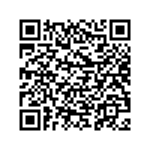 While moderate, short-lived stress responses in the body can promote growth, toxic stress is the strong, unrelieved activation of the body’s stress management system without protective adult support. Without caring adults to buffer children, the unrelenting stress caused by extreme poverty, neglect, abuse, or severe maternal depression can weaken the architecture of the developing brain, with long-term consequences for learning, behaviour, and both physical and mental health. This video is from Three Core Concepts in Early Development, a three-part video series from the Center and the National Scientific Council on the Developing Child.
While moderate, short-lived stress responses in the body can promote growth, toxic stress is the strong, unrelieved activation of the body’s stress management system without protective adult support. Without caring adults to buffer children, the unrelenting stress caused by extreme poverty, neglect, abuse, or severe maternal depression can weaken the architecture of the developing brain, with long-term consequences for learning, behaviour, and both physical and mental health. This video is from Three Core Concepts in Early Development, a three-part video series from the Center and the National Scientific Council on the Developing Child.
Click or scan the QR code to watch the video or watch above.
Implementing Trauma-Informed Practice

Dr. Krishnamoorthy: You have the wisdom of looking back now about how things have changed from when you first started on your trauma-informed approach. What would you say to people at the beginning of their journey now who feel intensely helpless and quite cynical about things being different when working with really challenging students?
Mr. Sporleder: What I’ve learned is to start talking to the students and give them a voice to see what they’re thinking. As much as we need to create safety around our students, we must also create safety around our staff. I told the students even though they did not like my rules when I first got there and were not very popular, I kept playing that broken record that said, “You say you didn’t feel safe. I’m committed to a safe school.” I also gave the teachers the same commitment to creating a safe school where they felt safe.
The difference between traditional and trauma-informed approaches is that we always tell students how it will be versus asking for a voice . Once I came back and changed my approach and started asking versus telling, we saw things change immediately. It was what the students were telling us, which was the fuel that kept the fire burning to want to learn more. We then started wondering, “How did this kid ever make it to school?” versus telling them, “You’ve got a three-day suspension because you told the teacher to eff off.”
Giving people and students a voice is essential to building trust. We can value what these students tell us and validate their feelings without validating the action . The same strategies work with adults as well.“We can value what these students tell us and validate their feelings without validating the action.”
Dr. Ayre: Following on from that comment that you can validate their feelings and support them without validating the action, did you find that that was a hurdle for many teachers? The thought that “If we’re going to ask the students what they want, well, all of a sudden, they’re going to run the school. It’s not going to get any better. We’re letting them get away with it.” The mentality that “this is just an excuse for that behaviour now.” How did you keep the teachers engaged with that concept until you reached that point?
Mr. Sporleder: It’s a hurdle and a challenge still out in front of us as a system. Some still have a rigid mindset that there needs to be punishment. At one stage, only 50 students showed up daily at the school. We jumped to 175 students showing up within a year. I was then able to start hiring new people, and I hired people who had strong relationship skills. I had the naysayers, and my response to them was simply, “You know the direction that we’re going, and you know where I stand.” I’d shared that and brought in some staff development around it. And I said, “I know you don’t seem to want to go where I’m standing, and I can’t go where you’re standing.” So I said, “I’m willing to meet you on common ground. You just have to bring me the research.”
The educators with rigid beliefs and resist change want to complain but don’t necessarily want to solve the problem. When they’d come in to complain, I would just say, “Do you have your research?” It was a little bit of a play because I knew there wasn’t research to support where they were, but I put ownership on them and said, “I’ll meet you on common ground. You just need to bring the research to show that that’s how we should be approaching our students.”
I’m even at the point now when I’m presenting, I have a sense of urgency that I’ll share with the participants that we don’t get a pass. As a teacher, I don’t think I have the right to say, “I’m not willing to move away from this traditional approach of working with students through discipline. I’m not comfortable with the trauma-informed approach”. I can handle “I’m not comfortable,” but I’ll help you through that. But we should not get a pass because if we get a pass on that, we continue to hurt kids. I’d say it compassionately. I don’t want to be shaming or blaming educators because that’s not right. But I do take a stronger stance on that now because, as you know, we have too many hurting kids. Why would we want to add to their pain?“We have too many hurting kids. Why would we want to add to their pain?”
Dr. Krishnamoorthy: What were some of the other practical things you did at the school that made a difference in introducing a trauma-informed approach to the school?
Mr. Sporleder: The success at Lincoln High School was because we came together as a whole staff. You can have a few naysayers, but when you have the majority of staff lock arms – I’m talking secretaries, parents, your custodian, your cook – you all lock arms together and circle around your students, that becomes your identity, and that becomes your culture. So Lincoln High’s success was not my success. It was our success.

It was clear back in 2010 that we didn’t have all the information we needed on the staff development front. I was looking for a curriculum to implement, but being trauma-informed isn’t a curriculum. We picked up three concepts, and I’ve written a book on how to implement a trauma-informed model into a school, and I’ve written it in a manner of simplicity. Because of the movement and the awareness, some people think it’s rocket science versus relationships. When I’m delivering training, I say, “If you want to know how, this is the how.”
![]() Implementing Trauma-Informed Practices [1 hr: 10 mins]
Implementing Trauma-Informed Practices [1 hr: 10 mins]
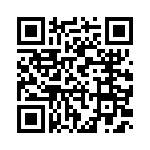 Under Jim Sporleder’s leadership, Lincoln High School built its framework around caring adult relationships with specific strategies on how to work with students who live with toxic stress from poverty, substance abuse, physical abuse and neglect. During the first year of implementing its trauma-informed approach, Lincoln experienced an 85 percent reduction in out-of-school suspension days. Watch his lecture to the Missouri Department of Education to learn more about Jim Sporleder’s journey in implementing trauma-informed practices at Lincoln High School.
Under Jim Sporleder’s leadership, Lincoln High School built its framework around caring adult relationships with specific strategies on how to work with students who live with toxic stress from poverty, substance abuse, physical abuse and neglect. During the first year of implementing its trauma-informed approach, Lincoln experienced an 85 percent reduction in out-of-school suspension days. Watch his lecture to the Missouri Department of Education to learn more about Jim Sporleder’s journey in implementing trauma-informed practices at Lincoln High School.
Click or scan the QR code to watch the video or watch above.
Firstly, we learned that we had to drop our personal mirror and that the student’s behaviour was not about me . That goes against our traditional training. Secondly, we learned that we had to give our students time to calm down. Problem-solving and trying to tackle the issue when they’re highly escalated is not a good time to do that. But that becomes an extremely valuable, teachable moment because when students come in, I can say, “I can see your brain’s not ready.” Where before, if they came in yelling, that could be an extra day out. They could say, “I’m not effing going to calm down,” and I would say, “Of course, you can’t, you’re not in that part of the brain.” So when you drop your mirror, it frees you up for those conversations.
When you stay calm when they’re escalated, you have such an excellent opportunity to help get them to calm. And that’s where the teaching takes place. Teaching them about their triggers and options, “Let’s think of other ways when we start to get frustrated on what we can do so we don’t have to tell the teacher to eff off.” I found that in the office when I was working with students one-on-one, that just became a tremendous opportunity to teach. I discovered the students doing this when we let them ask for time-outs, they started to self-regulate because we had the systems in place for them to do so.
What is the goal of discipline? To punish, harm, or to change the behaviour? And if the goal is to change the behaviour, we can do that. When we bring these students back to calm and do the problem-solving and the teaching when they’re calm, they learn to change their behaviour. I truly believe the relationship starts with accountability. Others will say this model has no accountability. I argue that it holds students at a higher level of accountability than we could ever wish for in a traditional model. What I found is that students would seek me out. They’d say, “Sporleder, I need a time-out. I’m about ready to lose it.” And then I could say, “Man, you’re watching your triggers. That’s awesome.” We would let them have their time-out, and we’d let them go back to class when they felt they were ready. The teachers were able to offer that to a student as well. Slowly, the students see that the culture is changing with them, not against them.
Thirdly, I noticed when we had those discussions, I’d watch the students, and they would be de-escalating. We got down to the point where they were calm, and we talked about choices, the brain and their triggers. Only at this point, when they are calm, is when I gave them their consequences. When they were calm and expecting it. We didn’t give them a pass for verbally abusing teachers. There was a consequence for it. But it came at the end, not when they were highly escalated.
Positive Impacts
Dr. Krishnamoorthy: Are there one or two things that stand out from when you noticed this approach making a difference with students and the school?
Mr. Sporleder: I always tell the story of the first student with whom I used this approach. This student walked into class one day and told the teacher to “f-off”. I’d had a policy for the previous three years where telling a teacher to eff off was a three-day, out-of-school suspension. Swearing at teachers was rampant when I first arrived, so this policy was implemented to curb that. So, I have this student who’s highly escalated. He’d told the teacher to eff off and then walked into my office.

I was a bit nervous at this point because I was changing my mindset and how I would not put this student on an out-of-school suspension. I was questioning myself on the inside. When this student came in, I said, ” That doesn’t sound like you. What caused that?” And he just went into how angry he was. That led to him saying, “Sporleder, I don’t know if you know it, but my dad is a drunk. He’s let me down all my life.” And then he’s telling me these stories of where his dad had promised to have him and his friends over to stay the night, for a movie night, or to take them to an athletic game, and he’d never show up. And this kid was just saying, “I’m so pissed. He’s let me down all my life.” Now, while he’s telling me this and you’re hearing these stories, you can’t help but say, “Man, I’m sorry. I never knew that.” Again, you’re validating the voice. I saw him calm down, and then he got to the point.
He said, “Today’s my birthday, and my dad promised me a car. He told me when I got up the morning, if I would run to the front window, he would sneak it over during the middle of the night.” And Jared said, “I believed him. I believed he was going to come through.” And he goes, “I got up this morning and no car.” And he continued, “I’m so effing upset.” And we were able to connect on those feelings, and then, suddenly, he said, “I need to apologize to him.” He knew I would enforce the consequences, but it wouldn’t be to suspend or send him home. It would be a consequence within school grounds. Before he left, when he got to the door, he turned around and said, Thanks for talking to me.”

And it hit me. All I did was connect to what he was saying. There really wasn’t a conversation. He went and apologized to the teacher. The teacher runs in and tells me, “Wow, did you hear about Jared and his dad?” And I said yes, and the teacher said, “He gave me the most beautiful apology.” It then occurred to me that the student was forgiven. The teacher forgave him and showed him empathy and compassion, but he still had his in-school consequences. And that wasn’t a unique situation. It was a pattern that started because we started asking the students, “What’s going on? Where’s your stress level right now?” And I would ask, “Is it school, or is it coming outside of school?” And rarely did a student ever tell me it was school. It manifested itself at school, the trigger went off at school, but it just kept going on and on.
In the United States, we have some harsh disciplinary policies wrapping around the possession of marijuana. We’re putting students out of school for 35 days. If you ask, “Well, how do you get those students back?” The answer is we don’t get them back. Who goes out and checks on them? Nobody. Probably the most powerful story I have is when I had a student under the influence of marijuana, and I could tell he was smoking heavily. You could just see it in his face.
I’ve learned that kids use marijuana to handle their stress. That was hard for me to get my head wrapped around, but I finally started to, and when I had students in that situation, I would just say, “Hey, I’m not judging you, but it seems to me like you’re smoking pretty heavily.” Now, with this young man, he was what we call baked. He could hardly get his words out. But when I started to ask him about his stress, he said he was at a ten. And I said, “Emilio, you can’t handle a ten. Nobody can handle a ten. We’ve got to get you support.” And I told him, “You don’t have to tell me what’s going on, but a ten is heavy,” and all of a sudden, he shared with me about losing his older sister in a house fire and how he wasn’t there to rescue her, and that he would have run into that house even if it meant being killed himself. He would have at least tried.
I’m devastated with this story. He then takes it one step further, and he just breaks down and says, “My little sister was in foster care, and her foster dad beat her to death.” And he said, “Sporleder, I would have protected her. I’m the brother. I should have been there.” He said, “I can’t get those thoughts out of my mind.” He said, “I can smoke and smoke and smoke, and I can’t get those thoughts out of my head.” And I was able to share with him, “I think we can help you with that if you want help because we have the health centre here.” And he was one student who said he was willing to get some help. And just four months down the line, he was smiling. His face was clear. One day, I pulled him aside and said, “I’ve just got to tell you, Emilio, you’re looking great. I see you laughing, and it’s so cool to see you mingle with your peers.” And he said, “The counselling has really helped me”.
Now, what if I had put him out of school for 35 days? He needed to be with us, not excluded from us. Even though I enforced consequences on him, and he got a charge from the police because he was also in possession, he expected all that. He told me, “I need to man up on that.” But with the focus of getting him support and help, seeing the impact of that, and then being able to pull him aside and just say, “How are you doing?” That was one of my most powerful experiences, and it showed that what we are doing is working.
![]() Childhood trauma and addiction [2:48 mins]
Childhood trauma and addiction [2:48 mins]
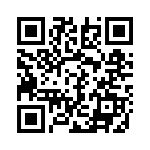 Jim tells the story of a teen using marijuana to cope with traumatic memories. So, how does childhood trauma lead to addiction? Gabor Maté CM is a Hungarian-born Canadian physician. He has a background in family practice and a special interest in childhood development and trauma and in their potential lifelong impacts on physical and mental health, including autoimmune disease, cancer, ADHD, addictions, and a wide range of other conditions. Check out this video explainer of Dr. Maté’s explanation of the links between childhood trauma and addictions.
Jim tells the story of a teen using marijuana to cope with traumatic memories. So, how does childhood trauma lead to addiction? Gabor Maté CM is a Hungarian-born Canadian physician. He has a background in family practice and a special interest in childhood development and trauma and in their potential lifelong impacts on physical and mental health, including autoimmune disease, cancer, ADHD, addictions, and a wide range of other conditions. Check out this video explainer of Dr. Maté’s explanation of the links between childhood trauma and addictions.
Click or scan the QR code to watch the video or watch the video above.
Dr. Krishnamoorthy: It sure is a powerful story. Thank you so much for sharing it. It made me think about how we hear educators see their role as being relatively narrow in teaching students academics. Your story reminds me that the most potent thing that schools provide is a community and providing them care, which, for some students, makes all the difference. That story hit home for me because there was no one else the student could talk to, and he felt safe enough to share those things and get help for them in the school environment.
Mr. Sporleder: The relationships at school helped this student develop skills, and through the counselling, he didn’t have to smoke so much. When he doesn’t have to smoke so much, we have an engaged student and not one who was high and dealing with such high stress. He’s also able to build the relationships he needs at school. We won’t get to the academics until we start dealing with these students’ emotional well-being.
The proof is in our testing scores. Our testing scores went through the roof. We made 30% gains. But it didn’t happen overnight. I know you’re going to hit a certain growth ceiling, but our students were engaged because they were in trusting relationships. When you’re in relationships, it opens us up for hope and healing and builds resilience. It’s naturally empowering. It’s not us making those decisions for them. It’s them being able to find that power from within. This approach will get us everything we want. Discipline improves, and academic outcomes go up.
Dr. Krishnamoorthy: An increase in test scores is remarkable in the student population you describe. Were there any other outcomes you achieved at Lincoln High that you wanted to share?
Mr. Sporleder: We wrapped a research protocol around our work. We took our seniors and tracked them back to the eighth grade. We tracked attendance and behaviour, their GPA and their credits. That year, the average senior, or our average student, averaged 5.5 ACES. That was our school average. So that was off the charts. 70% of the students performed as if they had zero ACES, which is so powerful. Why was it successful? It aligned with what the research tells us. The students identified, “I have a family. I have people that care about me. I have hope.” And in their words, they said, “I have hope, and I have optimism about my future”.The students identified, “I have a family. I have people that care about me. I have hope.”
Sometimes I get too much credit. People say that I transformed Lincoln, and I always say, “No, Lincoln transformed me.” And you can’t give enough to these students that they don’t give you so much more back. I’m grateful for what they taught me through their lives, and now I have an outreach for the alumni students, so I still have one foot in the trench a little bit, and they’re still transforming me and teaching me.
Trauma-Informed Leadership and Sustainability
Dr. Krishnamoorthy: What would you say to the teachers who may be the only voice in a whole staff group or a district trying to advocate for trauma-informed practices?

Mr. Sporleder: The biggest lesson for me is that if we’re going to move a school and if we’re going to see sustainability, the principal has to lead it . We encourage a principal to develop a leadership team within the school to help with that. The staff have to see the leader leading. I’ve been in some situations where I’ll deliver training, and the principal will be in and out of the training. In the early stages, where I could do more follow-through or follow-up with the school, I noticed that implementation would fall to the wayside because nobody was leading it. When we have teachers doing it in isolation, I have joy for the students who have those teachers. I then feel pain when those students have been nurtured and have made so much progress, and they go to the traditional teacher the following year, and we lose all the progress.“If we’re going to move a school and if we’re going to see sustainability, the principal has to lead it.”
I’ll get calls from district offices saying, “We’ve got to get our whole district trained,” and my focus is, “Let’s find your champions who are asking to be trained. Let’s get those schools trained so they become the trainers from within the school system, and then they train other schools. Because your data from the school will attract other people, teachers and leaders in.” The truly trauma-informed schools that I know have outcomes that are no different than what we saw at Lincoln. Their discipline has plummeted, and their academic scores have gone up. The relationships and the school culture are compelling. I have one school in Kansas that is truly trauma-informed. They are now training schools regionally, and the principal is presenting nationally. That’s where we’re going to get the sustainability from. We’ve got to get the champions; we’ve got to get behind them because I can come in and train, and then I’m gone. We need those schools to blossom, grow, and show how it’s done so that they can be the champions within the district to keep it going.
 Trauma-informed leadership
Trauma-informed leadership
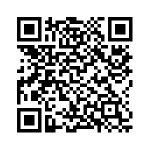 Leading a school community to change their beliefs and practices can be a daunting challenge – one that educational leaders introducing trauma-informed practices face repeatedly. How do you balance a focus on the needs of the students while maintaining safety, predictability and equity within the school community? Check out this article by Dr. Kay Ayre and colleagues on a framework for implementing trauma-informed practices – balancing the needs of students with those of educators.
Leading a school community to change their beliefs and practices can be a daunting challenge – one that educational leaders introducing trauma-informed practices face repeatedly. How do you balance a focus on the needs of the students while maintaining safety, predictability and equity within the school community? Check out this article by Dr. Kay Ayre and colleagues on a framework for implementing trauma-informed practices – balancing the needs of students with those of educators.
Click or scan the QR code to access the journal article.
Dr. Krishnamoorthy: What has been your experience with the implementation and the follow-up for schools that implement trauma-informed practice well?
Mr. Sporleder: Now that I’m travelling nationally, I don’t have the opportunity to go into one school and to stay with them until they’re up and running with these practices. But those that I know that are doing it, it’s powerful. I’m going to conferences, and I have people walk up with my book and say, “I just want you to know we are a trauma-informed school, and we used your book to become trauma-informed.” And that’s incredible. There is a quote that goes, “To work with trauma-informed kids, we’ve got to go through their hearts to get to their heads.” When I’m delivering training or presentations, that’s my goal. I want to hit somebody’s heart to get to their head and create that mind shift. You don’t always know if you’ve done that, but getting that feedback is very exciting.“To work with trauma-informed kids, we’ve got to go through their hearts to get to their heads.”
Dr. Ayre: That’s so much wonderful, valuable information. I agree it’s working with the teachers to change the culture. That ‘behaviour was your choice’ mentality, which we were all trained in, to have the courage to try something new and different makes you feel a bit nauseous, and to back yourself and know that you can be effective is huge. If you just back yourself in that you’re a good teacher and you can do this, it’s what you’re trying to do for the children, but you’re trying to do it for yourself. Backing yourself with feelings and relationships is the right thing to do. Still, it’s such a scary prospect to trust the principal and this new idea and just let go of everything you were taught to be true. The data will indeed attract the teacher. When you have people, like you said, like the school in Kansas, that go, “We are living proof that this works.” It’s just great. That’s how we will change how we do things in schools.
Mr. Sporleder: You bring up such a good point. We’re not asking a teacher to do anything different than how they deserve to be treated . My naysayers, if they screwed up or if they’ve got themselves in a jam, they want compassion, empathy, understanding, and forgiveness as much as anybody else. So when we look at it, it’s nothing we wouldn’t ask of ourselves or how we ourselves deserve to be treated.

One of the misnomers is that being trauma-informed is a check box. You’ve gone in and delivered your training, and folks will say, “We did trauma-informed already.” And I always say, “You don’t do trauma-informed, trauma-informed is who you are. It’s who I am as a person. It’s who we are as a school. It’s our culture. This is how we take care of our kids, this is how we take care of our families, this is how we take care of ourselves and work with one another”. So it’s the culture of who we are, not what we did or think we did. A giant lesson for me was that we can’t reach 100% of students. We know that. But we can love them all 100%. And when we love these kids 100%, some will fail, but I’ve seen in this journey that you don’t give up on kids who have failed. Because there are kids who fail, and they fail in an atmosphere of love, so when they get back up, they go back to the people they feel that they’re safe with. You can help pick them back up and move them forward from that point. And that’s been a very, very powerful lesson for me.“You don’t do trauma-informed. Trauma-informed is who you are.”
I’m transitioning in my mindset and thinking with the term ‘trauma-informed’. At least here in the States, we have a movement. We have a wave building, definitely not anywhere close to cresting, but we have a wave that’s building, so the term ‘trauma-informed’ is used a lot. I’m beginning to change my thinking and language where trauma-informed, which to me now is we have the why; now we need to be ‘trauma-responsive’. We have to put the why into action. So I’ve been using the trauma-responsive phrase more and more to create action because, as you’ve probably noticed, you can deliver training, and it can be, “Well, you didn’t tell me how to do it. I know we need to make a change, but how? You haven’t told us how yet.” Those three concepts I gave you earlier are pretty subtle concepts, but if I can embrace them, they are so powerful and will take us to who we are. That’s what we’re doing.
Chapter Summary
- Prioritise building a school culture where students and staff feel valued and safe.
- When students are in the fight/flight/freeze part of their brain, they physiologically cannot learn or problem-solve.
- Talk to your students to empower them by giving them a voice.
- We can validate our students’ feelings without validating their actions.
- The student’s behaviour is not about the teacher.
- Give students time to calm down before engaging in problem-solving or consequences.
- To be sustainable, the principal and leadership team must pave the way to be trauma-informed.
![]() Listen to the full interview on the Trauma-Informed Education Podcast
Listen to the full interview on the Trauma-Informed Education Podcast
Listen to our full interview with Mr. Jim Sporleder on our Trauma Informed Education Podcast.
Click or scan the QR code to start listening.
References
Australian Child Maltreatment Study. (2023). Australian Child Maltreatment Study. https://www.acms.au
Australian ADHD Professionals Association. (2024). Talking about ADHD Language Guide. Retrieved from https://aadpa.com.au/talking-about-adhd/
Ayre, K. & Krishnamoorthy, G. (Hosts). (2018, May 16). Trauma Informed Leadership with Jim Sporleder [Audio podcast episode]. In Trauma Informed Education. SoundCloud https://soundcloud.com/trauma-informed-education/69-trauma-informed-leadership-with-jim-sporleder
Ayre, K., Krishnamoorthy, G., Rees, B., & Berger, E. (2022). Balancing the needs of the school community: Implementing trauma-informed behaviour supports in an Australian regional primary school. Australian Journal of Teacher Education (Online), 47(9), 43–61. https://search.informit.org/doi/10.3316/informit.037757678986555

